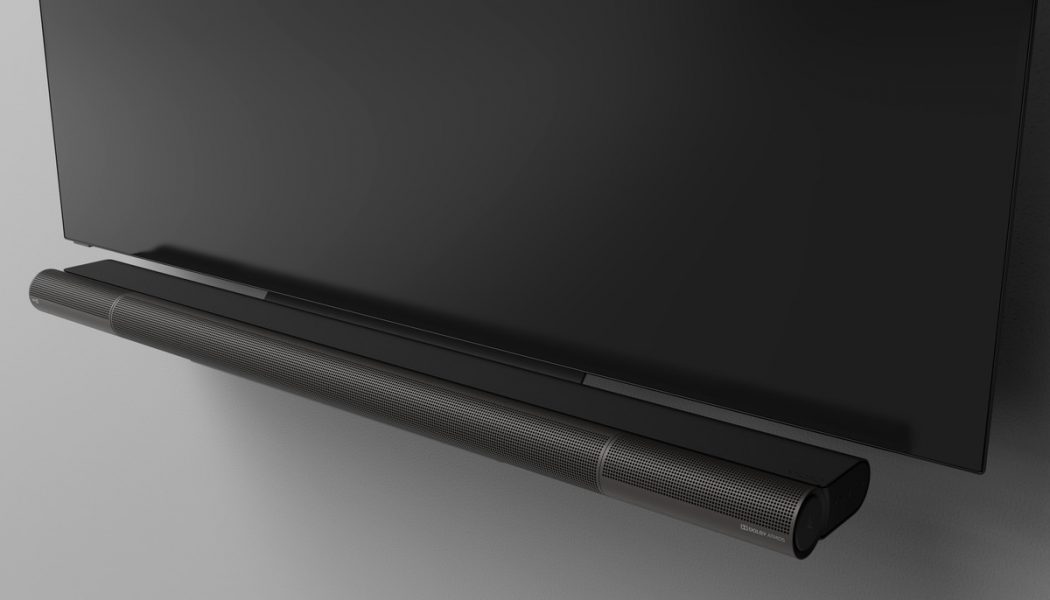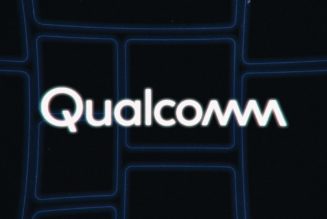William Wang, the CEO of Vizio, doesn’t give a lot of interviews. Earlier this month, he gave one to me. But he didn’t want to discuss the affordable, high-value smart TVs for which his company is best known. He wanted to discuss soundbars. That’s because Vizio is trying, harder than ever, to convince its customers to care about audio.
Vizio is no stranger to audio. It was an early champion of providing 5.1 surround sound at an accessible price, making a splash in 2013 with its $330 Home Theater Sound Bar. And for several years, reviewers have recommended the company’s affordable Dolby Atmos products as the best budget soundbars you can buy.
For those unfamiliar, Dolby Atmos is essentially the 4K of speakers — it’s really nice, but not all products support it (and neither does all content). Rather than mixing audio into different channels, as traditional systems do, Atmos pinpoints the exact location where each sound should emanate from, making you feel like you’re immersed in the audio. To achieve this, high-end products use upward-firing drivers, which bounce sound off the ceiling. The result imitates the experience of a theater (which might have speakers built into the walls and ceiling) with just a soundbar, subwoofer, and perhaps rear speakers.
But despite the availability of affordable Atmos soundbars, most people still aren’t buying them; home theater remains largely an enthusiast space. “It’s a slower adoption than we would think the market should do,” Wang said. “It’s not a commodity at this particular time.”
Other experts agree. “Purchase of high-end home theater equipment, especially speakers featuring more premium technologies like Dolby Atmos or DTS-X, tend to make up a small share of home audio sales — approximately 11 percent,” said Vivek Pandya, lead analyst for Adobe Digital Insights.
Those enthusiasts aren’t Vizio’s traditional customer base. But it’s clear that low prices haven’t yet been enough to make Atmos a mainstream staple: the company also needs to bridge a cultural divide.
“I describe the audio space like a wine,” Wang said. “The TV space is like a beer. Everybody’s drinking beer, but not everybody wants to pay for wine. Why is that? People have a perception that wine is expensive. Most people are a beer drinker, but not everyone is a wine drinker.”
:no_upscale()/cdn.vox-cdn.com/uploads/chorus_asset/file/19942086/Elevate_Wall_Mounted__1_.png)
That’s why Vizio is trying something this year unlike any product it’s tried before: the Vizio Elevate.
The Elevate, unveiled at CES 2020, is a striking aluminum soundbar with 10 channels, 18 drivers, and a wireless eight-inch subwoofer. The speakers on the left and right ends of the soundbar rotate upward when you’re playing Dolby Atmos content, and point forward when you’re playing anything else (like standard surround sound or music). It’s a design that allows the Elevate to be more versatile than other Atmos soundbars, which have fixed, upward-firing speakers.
Cynics might see the rotating components as a gimmick. Wang says it’s more; he intends for it to give mainstream, non-enthusiast consumers a visual introduction to Dolby Atmos.
I asked Wang why mainstream consumers should want Atmos. He said he couldn’t explain that — he thinks people just need to hear it and need to know that they’re hearing it.
“Atmos is really hard to describe,” said Wang. “You can hear a helicopter blade from the ceiling. But it’s really hard to explain to people, what does that mean?” The Elevate’s rotating speakers are a physical nod to the distinction between the two tiers of audio, but also a visible reminder; the device is made for both. “So people can’t just imagine what the Atmos experience is like, but they can see it,” Wang says.
:no_upscale()/cdn.vox-cdn.com/uploads/chorus_asset/file/19942019/William_and_Sakura_at_Home.jpg)
And once people hear the difference on their TVs, Wang thinks they’ll start using it for their music, too — and buy better soundbars and speakers in the future.
“In the last few years, we realized that a lot of people use the soundbar when the TV is off,” Wang said. “When you watch a movie, that helicopter blade, you want to hear it on the TV. But when you play back a classical music piece or pop or rock, you can also bring that sound back. So you get more speakers to get a more powerful sound when the TV is off.” (Vizio declined to comment on whether it plans to expand beyond soundbars to other standalone audio.)
Brian Markwalter, SVP of research and standards at the Consumer Technology Association, believes it makes sense for TV manufacturers to expand into soundbars. “They can style the soundbar as they style their TVs, and over time they can introduce products together,” Markwalter said.
Form factor is another draw for brand loyalists. “Consumers generally are really happy with their TVs, and they also really like simplicity,” says Markwalter. “Soundbars help conquer that — how do you get good sound without the complication of trying to fit speakers all around?”
In addition, Markwalter said, “the audio business has always been very steady. Separate speakers have been steady sellers.”
Rakuten data provided to The Verge shows that soundbar sales (by item count) have increased each month this year, with 86 percent more units sold in April than in March. Sales in the TV segment have been more of a mixed bag; dollar growth has been slower than the overall “electronics and accessories” category throughout all of 2020 so far, while soundbars exceeded the category’s growth in January and February.
An eBay spokesperson also told The Verge that the platform has seen an 18 percent uptick in sales of “speakers and similar entertainment products” in the past week. That’s not surprising, given current circumstances. “From quarantine hits like Tiger King to movie releases skipping theaters and heading straight to streaming services, eBay’s dynamic marketplace has seen shoppers investing more in their home theaters and family rooms as they settle into their new normal,” the spokesperson said. “Demand for home entertainment among eBay shoppers is up right now, in light of many people spending the majority of their time indoors.”
What’s missing from that conversation is, of course, the Elevate’s price. Vizio hasn’t announced that yet (and I asked Wang; he wouldn’t tell me). But it would be unusual to see a device with those specs asking less than $1,000 — certainly steep for a casual user.
In that sense, Vizio is playing the long game. “Every year, we’re going to try to reduce the cost,” Wang said. “That’s our fundamental approach to technology. There is no doubt that the rotating speaker is a key feature. It’s gonna be more affordable year after year.”
It’s a pattern Vizio’s products have followed in the past. The company released its first Atmos soundbars in 2018; the smallest 36-inch version was priced at $499, the 46-inch headliner at $999. Those were low prices for Atmos at the time; most devices featuring the technology were priced well north of $1,000. But Vizio has pushed the tags lower since. You can now buy its Atmos systems for at least $100 cheaper (and as low as $300 if you can snag a good sale).
Analysts agree that we’re likely to see broader adoption of Atmos in the future. “We’ve crossed over the tipping point where 4K Ultra HD sells more than HD,” Markwalter said. “I think we’ll see similar things with sound as these new immersive audio formats come in.” But, “a format change like that takes a little bit of time.”
Wang sees an affordable rotating speaker as a move in that direction. But the first step to driving the new technologies’ price down, in Wang’s view, is to release it and see how customers respond. That’s also what differentiates Vizio’s approach from that of competitors in the lower end, such as Roku, which recently announced a wireless surround-sound system combining its smart soundbar, subwoofer, and wireless TV speakers. Wang doesn’t consider the TV to be an endgame; it’s a jumping-off point to a new audio philosophy.
:no_upscale()/cdn.vox-cdn.com/uploads/chorus_asset/file/19942077/Elevate_Cutaway.png)
Do the new high-end releases signal a new direction for a company known for its budget products? Budget consumers need not worry: Wang assured me that it doesn’t. Vizio’s hope is that the Elevate’s rotating speakers will appear in low- and midrange devices down the road. “We don’t try to make a lot of money on a small quantity. Our model of success is to do a lot of technology we can offer at a really low margin. This is really the Vizio strategy.”
That tracks with Vizio’s approach (or lack thereof) to the connected home. Unlike companies such as Sonos that have made a splash in the smart home sphere with the Beam and Sonos One, Wang doesn’t intend to make that market a priority. “Rich people want to show off their music in different rooms,” says Wang. “Turn the whole house into a party. The entire house is the musical experience.” (According to a 2019 Nielsen report, the average income of households that own smart speakers is over $100,000). “Vizio’s focus is a little bit different … I don’t think any customer of ours would require us to synchronize every TV screen at people’s houses.”
While it may be high-end shoppers that have their eyes on the OLED and the Elevate for now, Vizio’s focus remains on its budget-oriented base. “We’ve never thought of ourselves as a brand who would put on a big party for your home with people who have millions of dollars with a huge house,” says Wang. “I personally love it. But not my customers. They just want to spend $200 on a soundbar.”









